Discover the Secrets of Tongwan City National Archaeological Park: A Journey Through Time
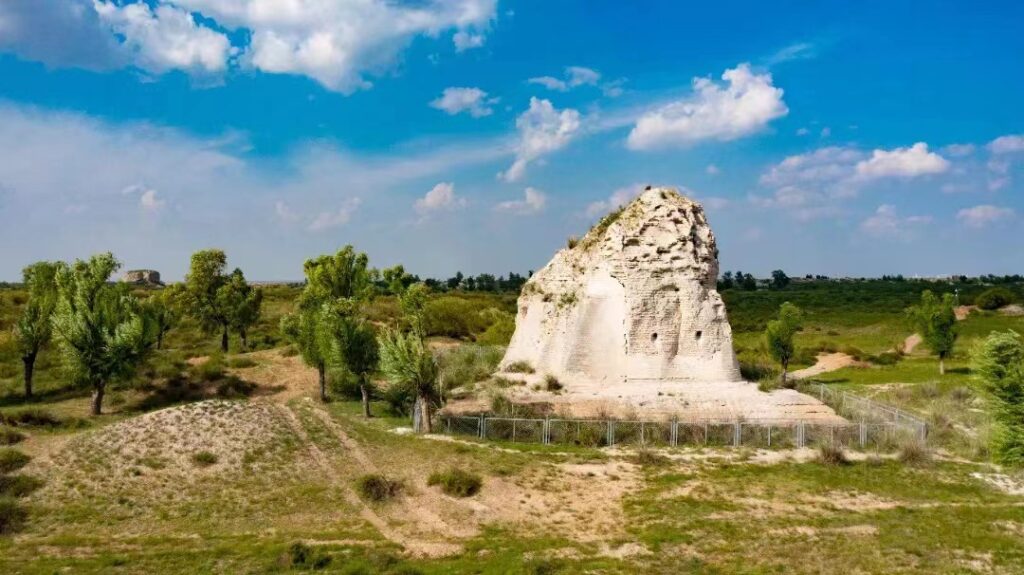
An Essential Guide to Visiting Tongwan City National Archaeological Park
In This Guide
- An Essential Guide to Visiting Tongwan City National Archaeological Park
- The Rich History and Legends of Tongwan City National Archaeological Park
- Main Highlights: What You Absolutely Can’t Miss
- Planning Your Visit: A Practical Guide
- Tickets: Prices, Booking, and Tips
- How to Get There: A Complete Transportation Guide
- Local Cuisine and Accommodation Nearby
- Frequently Asked Questions
- Final Thoughts on Your Trip
Visiting Tongwan City National Archaeological Park offers a mesmerizing glimpse into a vibrant chapter of Chinese history, where the echoes of the Xiongnu Empire resonate amidst the windswept sands of the Mu Us Desert. Constructed in 413 AD by the formidable Helian Bobo, this ancient city serves as the last vestige of a once-thriving capital that witnessed the rise and fall of nomadic cultures. As you tread along the remnants of time-worn walls and explore the ruins of rammed earth structures, you embark on a journey that transcends centuries, immersing yourself in the stories of a civilization that sought to unify the world.
What to Expect
Nestled approximately 60 kilometers north of Jingbian County in Yulin City, Tongwan City is often referred to as Baichengzi, or “White City,” due to the unique white hue of its ancient walls made from a mixture of sand, clay, and lime. While much of the city lies buried beneath shifting dunes, the portions that remain above ground reveal a fascinating layout, including the inner and outer city, which together narrate tales of military strategy and governance.
As you wander the site, you’ll encounter:
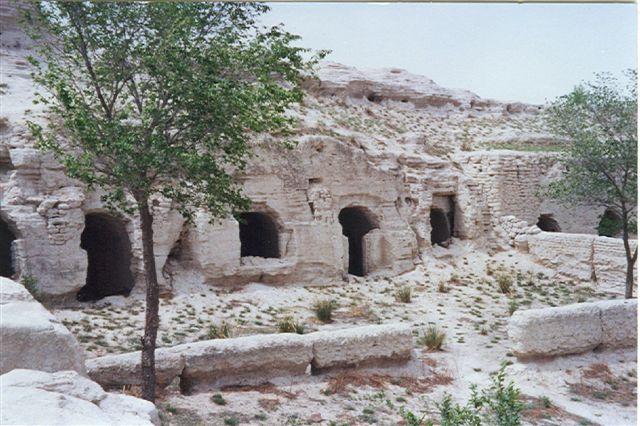
Tongwan_City_National_Archaeological_Park.
- The City Walls: Stretching about 5 kilometers, the walls offer striking views of the surrounding landscape and insights into ancient defensive architecture.
- Yong’an Platform: This significant structure not only served as a command center but also stands as a symbol of Helian Bobo’s ambition and authority.
- Birdwatching Opportunities: The ruins, especially around the high pier, have become a sanctuary for various bird species, providing a delightful experience for nature lovers.
Getting There
Reaching Tongwan City requires a bit of effort, as public transportation is limited. The most convenient way to arrive is by taking a shuttle bus to Baicheng from Jingbian County. From there, it’s a short 15-20 minute walk to the park. However, be cautious of the bus schedules, as return trips may not always be available in the afternoon.

Tongwan_City_National_Archaeological_Park.
Practical Tips
- Duration: Plan to spend about 2-3 hours exploring the site to fully appreciate its historical significance.
- Essentials: Due to the remote location, amenities are scarce. Bring water, snacks, and wear comfortable shoes for walking on sandy paths.
- Accommodation: While there are no hotels in the immediate vicinity, consider staying with local villagers to experience authentic hospitality.
Conclusion
In the heart of the arid landscape, Tongwan City National Archaeological Park stands as a testament to the resilience of human history. Whether you’re a history buff, an adventurer, or simply curious about ancient cultures, this park invites you to uncover the mysteries of the past while enjoying the stark beauty of its surroundings. Don’t miss the chance to step into a realm where history and nature intertwine, offering a truly unique travel experience.
The Rich History and Legends of Tongwan City National Archaeological Park
Nestled in the arid expanse of the Mu Us Desert, Tongwan City National Archaeological Park serves as a fascinating testament to the rich tapestry of Chinese history, particularly the legacy of the Xiongnu people. Established during the Eastern Jin Dynasty in 413 AD by the formidable leader Helian Bobo, this ancient city was the capital of the Xiongnu Daxia Kingdom. Its very name, “Tongwan,” which translates to “unify the world and rule over all nations,” reflects the ambitious spirit of its creator.
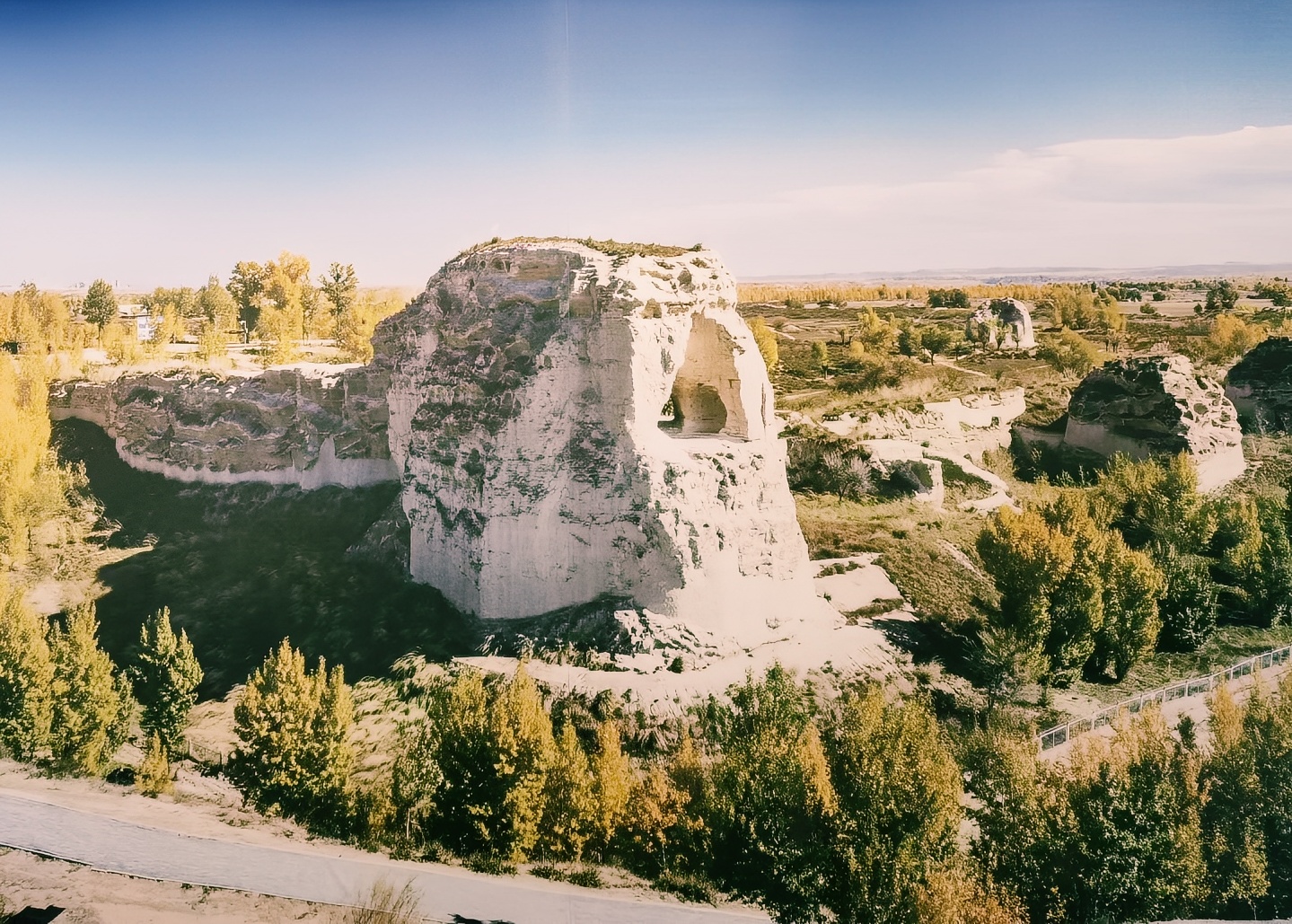
Tongwan_City_National_Archaeological_Park.
A Historical Overview
Tongwan City, also known as Helian City, was constructed over six years and involved the labor of more than 100,000 people from various ethnic backgrounds. The city is characterized by its striking white walls, made from a unique mixture of sand, clay, lime, and glutinous rice water. This innovative building technique has allowed the city to withstand the test of time, though much of it remains buried under the shifting sands of the desert.
The layout of Tongwan City comprises an inner city and an outer city, further divided into eastern and western sections. The remnants of the city reveal a sophisticated urban planning system, with numerous watchtowers and defensive structures strategically placed along its extensive walls. The most prominent of these is the Yong’an Platform, where Helian Bobo conducted state affairs. This commanding structure serves as a reminder of the city’s historical significance as a political and military center during the era of the Xiongnu.
Legends of Tongwan City
The legends surrounding Tongwan City are as captivating as its historical narrative. One notable tale involves Gugan Ali, a notoriously cruel overseer during the city’s construction. According to legend, if a laborer failed to drive an awl through the city wall by even an inch, they would face dire consequences. This story illustrates the harsh realities faced by those who contributed to the city’s construction, adding a layer of human drama to the archaeological site.
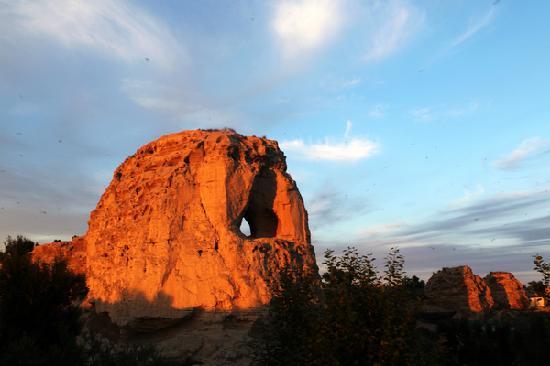
Tongwan_City_National_Archaeological_Park.
Another intriguing aspect of Tongwan’s lore is its connection to the natural world. The ruins of the city are not just a relic of human endeavor but have also become a sanctuary for various bird species. The remnants of the ancient pier, once a bustling point of entry, now serve as a nesting ground for these feathered inhabitants, creating a unique blend of history and nature.
Cultural Significance and Future Prospects
As the only known capital of the Huns in history, Tongwan City holds immense cultural significance. Its inclusion in discussions for World Cultural Heritage status underscores the site’s importance not just in local history but in the broader context of world heritage. Plans are underway for the development of the Xiongnu Cultural Square, which will help to promote the rich cultural narratives of the Xiongnu people.
Visitors to the park can explore the ruins that stretch over five kilometers, with the southern section offering the best-preserved portions of the wall and various enemy platforms. Walking through these ancient remnants allows one to step back in time, imagining the once-thriving metropolis bustling with activity.
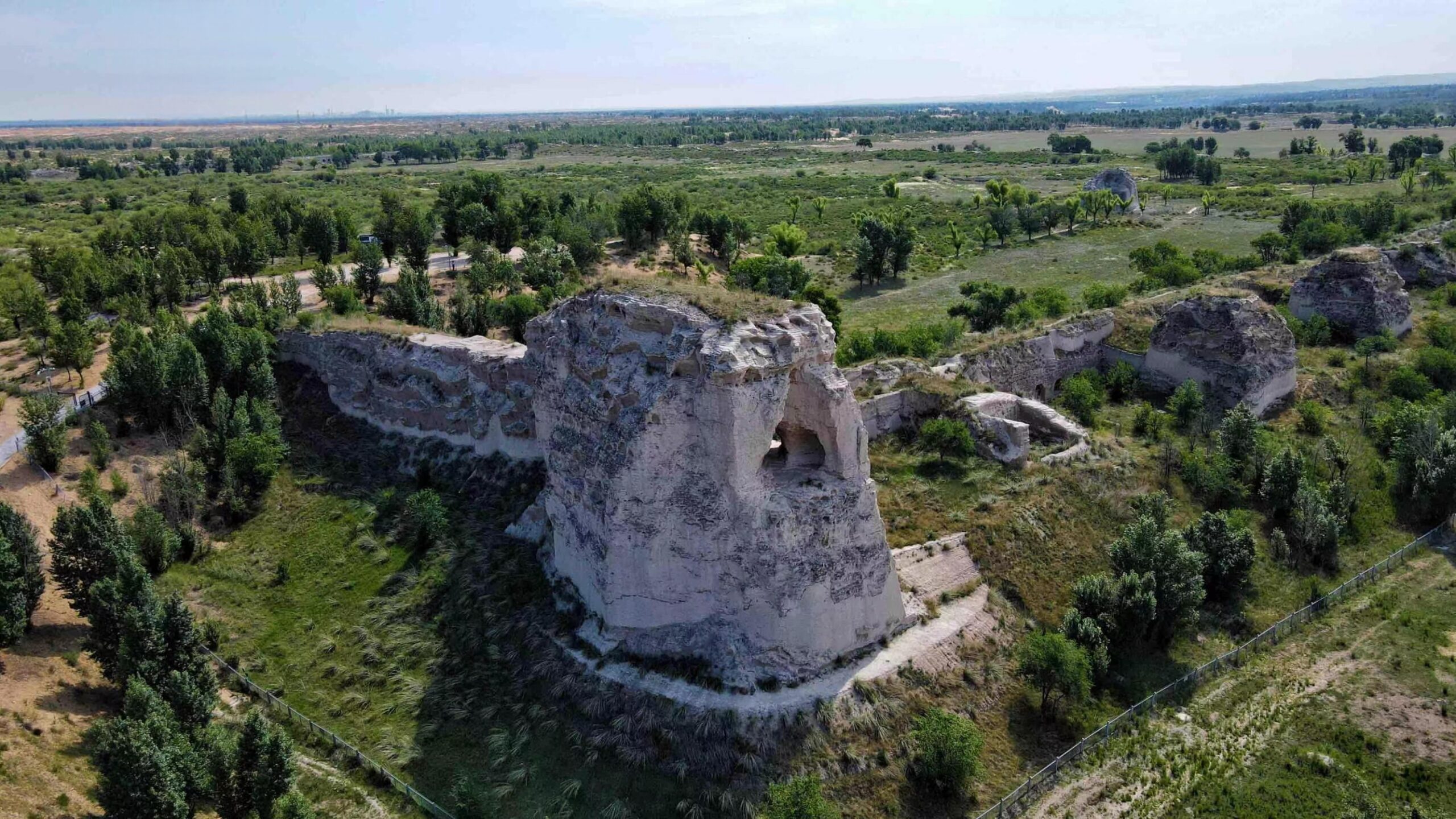
Tongwan_City_National_Archaeological_Park.
Conclusion
Tongwan City National Archaeological Park is more than just a collection of ruins; it is a portal to an era marked by ambition, conflict, and cultural interplay. As international travelers seek to engage with the profound histories of China, a visit to Tongwan City promises an enriching experience filled with stories of resilience and the quest for unity. Whether you are captivated by its legends or intrigued by its archaeological significance, Tongwan City invites you to uncover the layers of history that have shaped this remarkable site.
Main Highlights: What You Absolutely Can’t Miss
Discover the Enigmatic Tongwan City National Archaeological Park
Visiting Tongwan City National Archaeological Park is akin to stepping back in time to the Eastern Jin Dynasty, where the fascinating remnants of a once-thriving capital whisper tales of the Xiongnu civilization. Nestled in the Mu Us Desert, about 60 kilometers north of Jingbian County, this UNESCO World Heritage Site is an essential stop for any traveler keen on exploring China’s rich historical tapestry.
1. The Majestic City Walls
One of the park’s most remarkable features is its ancient city walls, constructed from a unique blend of sand, clay, lime, and glutinous rice water. These walls, known locally as Baichengzi (White City), stand as a testament to the innovative building techniques of the time. Visitors can embark on a scenic stroll along the approximately 5-kilometer circuit of the walls, particularly focusing on the southern section, where remnants of enemy platforms can still be observed.
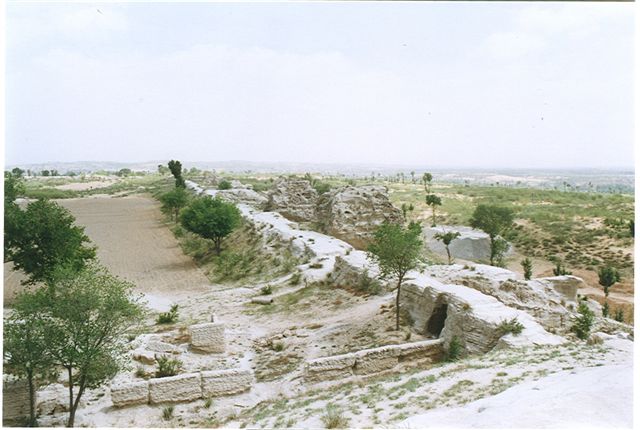
Tongwan_City_National_Archaeological_Park.
2. The Commanding Yong’an Platform
A highlight of your visit should be the Yong’an Platform, a crucial structure that served as a military command center during its heyday. This elevated site offers panoramic views of the surrounding landscape and is steeped in historical significance, being the place where Helian Bobo, the leader of the Xiongnu, managed state affairs. Gaze out from its heights and imagine the bustling city life that once filled the area.
3. The Enigmatic Ruins of the Inner City
The park is divided into the Inner City and the Outer City, with the Inner City featuring the remains of palatial structures where Helian Bobo once ruled. Explore the West City, the more intact section, where the archaeological findings provide insight into the architectural prowess of the era. The urn city at the west gate, a part of the ancient defense system, is particularly intriguing, revealing layers of history through its archaeological excavations.
4. The Bird Sanctuary Pier
Don’t miss the pier, a remarkable 30-meter-high structure that has transformed into a sanctuary for local bird species. The pier’s unique design and elevated position create a stunning natural habitat, making it a perfect spot for nature lovers and photographers alike.
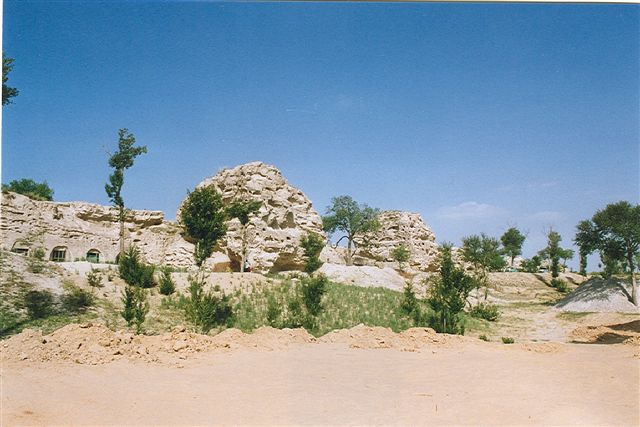
Tongwan_City_National_Archaeological_Park.
5. Engaging Cultural Experiences
If you visit during the Spring Festival or other special events, be sure to check out the immersive NPC performances that bring ancient history to life. Costumed actors portray figures from the past, allowing you to experience the vibrant culture of the Xiongnu as you wander through the ruins.
6. Practical Tips for Your Visit
- Getting There: Public transport is limited. Travelers can take a shuttle bus from Jingbian County to Baicheng, then walk approximately 15-20 minutes to the park.
- Recommended Duration: Allocate about 2-3 hours for a comprehensive exploration of the site.
- Amenities: Facilities are minimal; it’s wise to bring your own water and snacks, and consider staying with local villagers for an authentic experience.
7. Future Prospects
As Tongwan City seeks recognition as a World Cultural Heritage Site, ongoing restoration projects and the planned Xiongnu Cultural Square promise to enhance the visitor experience. This creates a unique opportunity for travelers to witness a site in the midst of significant historical preservation.
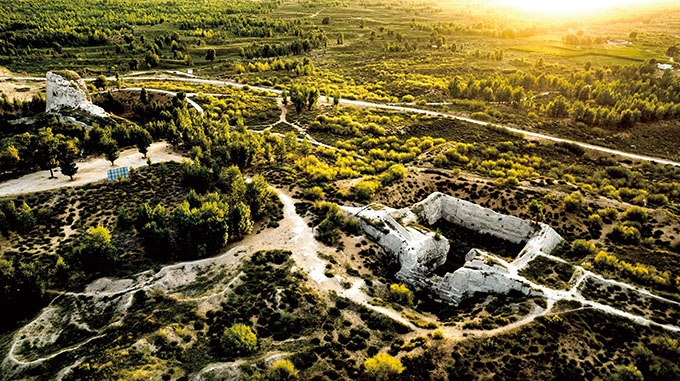
Tongwan_City_National_Archaeological_Park.
Visiting Tongwan City National Archaeological Park is not merely an excursion; it’s an opportunity to immerse yourself in the echoes of history and the enduring spirit of a civilization that once unified vast territories. Don’t miss the chance to explore this extraordinary window into China’s past!
Planning Your Visit: A Practical Guide
Getting to Tongwan City National Archaeological Park
Nestled approximately 60 kilometers north of Jingbian County in Yulin City, Tongwan City National Archaeological Park (统万城国家考古遗址公园) is a treasure trove of history that beckons those with a passion for ancient cultures. This archaeological site, rich with the remnants of the Xiongnu Daxia Kingdom, can be less accessible than more popular destinations in China, making it essential to plan your visit effectively.
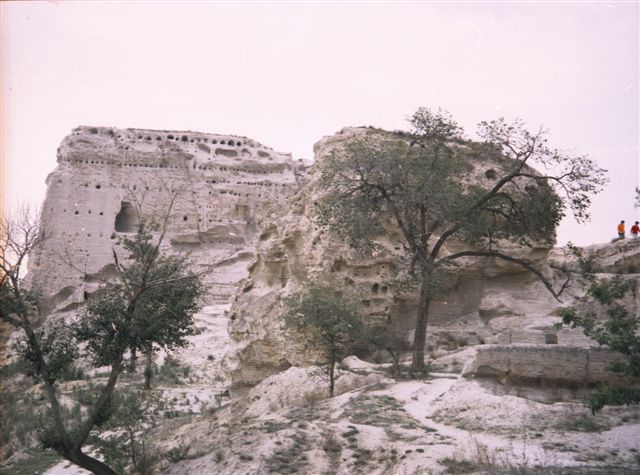
Tongwan_City_National_Archaeological_Park.
How to Reach Tongwan City
-
By Bus: The most viable option for international travelers is to take a shuttle bus from Jingbian County to Batu Bay in Inner Mongolia. Disembark at Baicheng, which is the nearest stop to the park. From Baicheng, it’s a 15-20 minute walk to the entrance of Tongwan City.
-
Return Trip: Be aware that return shuttle services from Baicheng to Jingbian may not operate in the afternoon, so it’s advisable to confirm the schedule or plan to stay overnight.
-
Nearby Towns: If you prefer staying closer to the site, the surrounding villages offer modest accommodations, often in the form of homestays. This provides a unique opportunity to immerse yourself in local culture.
Best Time to Visit
The ideal time to explore Tongwan City is during the spring or autumn months when the weather is mild, making the outdoor ruins more comfortable to walk through. Special events, like the Spring Festival activities, can enhance your experience, featuring traditional performances and immersive experiences that bring the ancient history of the site to life.
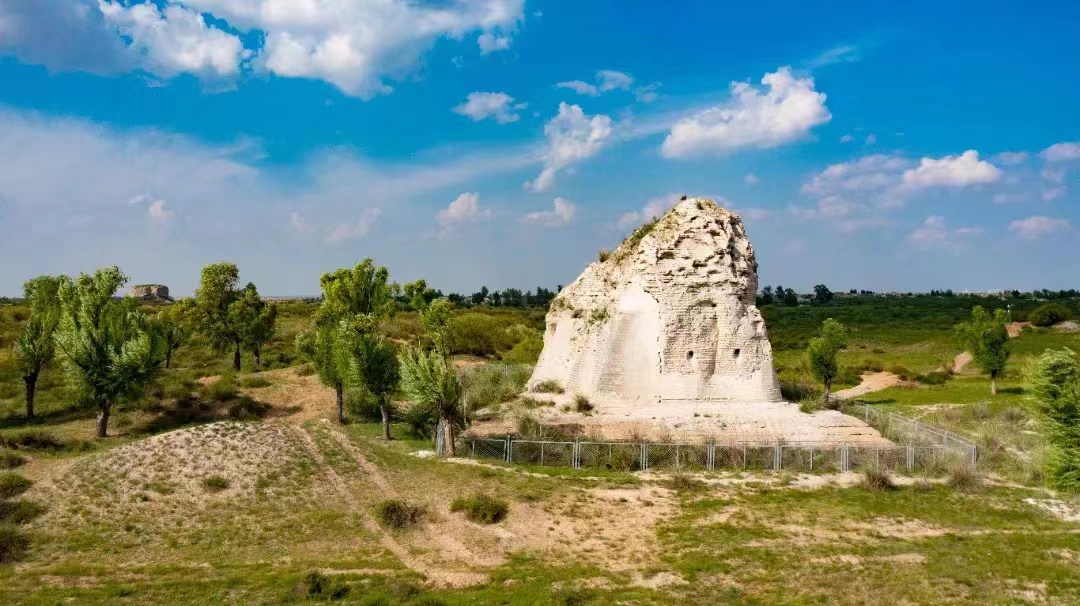
Tongwan_City_National_Archaeological_Park.
What to Expect
-
Historical Significance: Tongwan City dates back 1,600 years and was built during the Eastern Jin Dynasty by Helian Bobo, the leader of the Southern Xiongnu. The remains of the city are a poignant reminder of the cultural and political dynamics of ancient China.
-
Exploration Duration: Plan to spend 2-3 hours wandering the ruins. The city walls, constructed from a mixture of sand, clay, and lime, are still visible in parts, particularly the southern section where you can view various defensive platforms and the commanding Yong’an platform.
-
Walking Trail: A 5-kilometer circular path allows you to circumnavigate the city, providing access to notable sites like the enemy platforms and the ancient pier, which serves as a nesting ground for local birdlife.
Essential Tips for Your Visit
-
What to Bring: Given the limited facilities in the area, it’s prudent to carry water and snacks to keep you energized during your exploration. Comfortable footwear is essential due to the sandy terrain.
-
Cultural Etiquette: As you explore, be respectful of the site’s historical significance. Engage with the locals if possible, as their stories and insights can enrich your understanding of the region’s heritage.
-
Photography: The ruins offer stunning backdrops for photography. Capture the intricate details of the architecture and the expansive desert landscape that surrounds the site.
Facilities and Accessibility
While the park is a historical gem, amenities are sparse. Ensure you have your essentials before setting out. There are no large hotels nearby, so consider the homestay option for a more intimate experience. The absence of extensive tourist infrastructure means that the site remains unspoiled, allowing you to connect more deeply with its history.
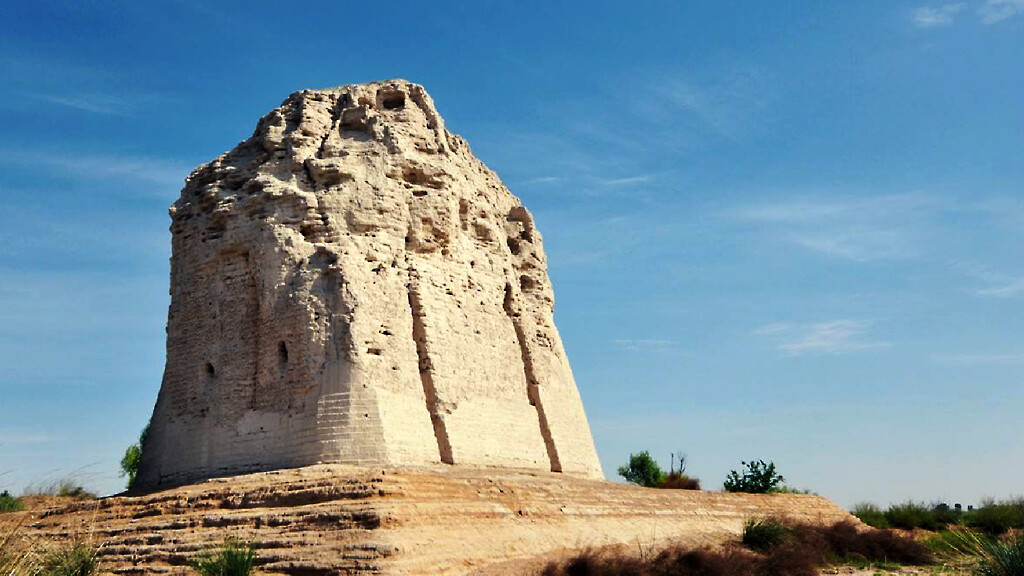
Tongwan_City_National_Archaeological_Park.
Conclusion
Visiting Tongwan City National Archaeological Park is a chance to step back into an era of nomadic kingdoms and ancient intrigues. With careful planning and a spirit of adventure, you can uncover the stories that have shaped this unique part of Chinese history. Whether you are a history buff or simply looking for an off-the-beaten-path experience, Tongwan City promises an unforgettable journey into the past.
Tickets: Prices, Booking, and Tips
Ticket Information for Tongwan City National Archaeological Park
Visiting Tongwan City National Archaeological Park offers a unique glimpse into the rich history of the Xiongnu civilization and the architectural marvels of the Eastern Jin Dynasty. To ensure a smooth and enjoyable visit, here’s everything you need to know about ticket prices, booking, and some helpful tips.
Ticket Prices
- General Admission: The entrance fee is approximately CNY 30 (about USD 4.50). This price grants you access to the park and its historical ruins.
- Discounted Tickets:
- Students (with valid ID) and senior citizens may be eligible for a discount, typically around 50% off the general admission price.
- Children under a certain height (usually around 1.2 meters) can enter for free.
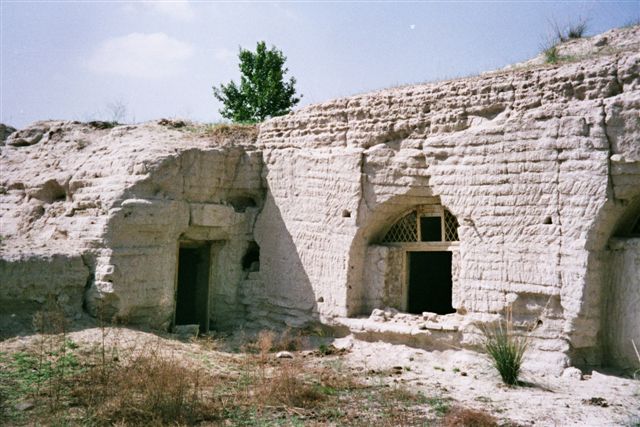
Tongwan_City_National_Archaeological_Park.
Booking Tickets
- On-Site Purchase: Tickets can be purchased directly at the entrance of the park. However, it’s advisable to arrive early, especially during peak tourist seasons or local holidays, to avoid long queues.
- Online Booking: While online booking options may be limited, check local travel platforms or the park’s official website for updates regarding advance ticket purchases. These can help you secure your entry and plan your visit more efficiently.
Tips for Visiting
-
Best Time to Visit: Aim for early morning or late afternoon to enjoy cooler temperatures and better lighting for photography. The park is especially beautiful during the spring and autumn months when the weather is mild.
-
Transportation: Given the park’s remote location, public transport options are limited. It’s recommended to take a shuttle bus from Jingbian County to Baicheng, followed by a 15-20 minute walk to the park entrance. Be mindful of the shuttle schedule, as there might not be a return service in the afternoon.
-
What to Bring: Facilities near the park are basic, so visitors are encouraged to bring their own water and snacks. Comfortable walking shoes are essential, as you will be exploring the ruins and the surrounding sandy terrain.
-
Duration of Visit: Allocate 2-3 hours to fully appreciate the site, including walking along the city walls and exploring the various ruins, such as the Yong’an Platform and the remains of the ancient city gates.
-
Facilities: Currently, there are limited visitor facilities at the park, including basic restrooms. Be prepared for a more rustic experience that emphasizes the site’s historical significance rather than modern amenities.
-
Cultural Etiquette: Respect the archaeological site by following park regulations, staying on designated paths, and not climbing on the ruins. Engaging with the local culture and conversing with villagers can enrich your experience.
With its deep historical roots and captivating ruins, Tongwan City National Archaeological Park is a must-visit for anyone interested in China’s rich past. Enjoy your journey through history!
How to Get There: A Complete Transportation Guide
Reaching Tongwan City National Archaeological Park: Your Transportation Guide
Nestled within the arid expanses of Shaanxi Province, the Tongwan City National Archaeological Park (统万城国家考古遗址公园) offers a mesmerizing glimpse into the ancient capital of the Xiongnu. While the allure of its historical ruins might spark your interest, getting to this remote archaeological site can present a bit of a challenge. Here’s a comprehensive guide to help you navigate your way to Tongwan City.
Getting to Jingbian County
By Air
The nearest major airport to Tongwan City is Yulin Yuyang Airport (YUL), located approximately 70 kilometers south of Jingbian County. Several domestic airlines operate flights to Yulin from major cities like Beijing, Xi’an, and Chengdu. From the airport, you can hire a taxi or arrange for a private transfer to Jingbian County.
By Train
For those traveling by rail, the closest train station is located in Yulin City. Yulin is well-connected to major cities across China. Upon arrival at Yulin Railway Station, you can take a taxi or a local bus to Jingbian County, which is about an hour’s drive away (approximately 60 kilometers).
By Bus
Long-distance buses frequently depart for Jingbian County from various cities, including Yulin. Check local schedules for bus times, as they can vary throughout the day.
From Jingbian County to Tongwan City
Once you’re in Jingbian County, the journey to Tongwan City will require a bit of planning:
Public Transportation
While public transportation options are limited, you can catch a shuttle bus bound for Batu Bay in Inner Mongolia. Make sure to request a stop at Baicheng, the nearest town to Tongwan City. The bus journey takes about 30-40 minutes. Upon arrival in Baicheng, you will need to walk approximately 15-20 minutes to reach the archaeological park.
Private Taxi or Ride-Sharing
If you prefer a more direct route or if the shuttle service does not align with your schedule, consider hiring a taxi or using a ride-sharing app. This option provides flexibility and can save you time, especially if you are traveling in a group.
Important Considerations
-
Limited Return Transport: Be aware that return shuttle buses from Baicheng to Jingbian County may not operate in the afternoon, and cancellations are possible. It’s advisable to plan your visit in the morning and consider an overnight stay if you wish to explore the area thoroughly.
-
Accommodation: There are no established hotels near Tongwan City. For those looking to immerse themselves in local culture, consider staying with nearby villagers or homestays. Ensure to arrange this in advance, as options may be limited.
-
Pack Essentials: Given the remote location, visitor facilities are basic. Bring along sufficient drinking water and snacks, as there are few dining options in the vicinity.
-
Cultural Insights: As you venture into this historical gem, remember that Tongwan City was founded in 413 AD during the Eastern Jin Dynasty and served as a significant hub for the Xiongnu people. This context can enrich your visit and appreciation of the site.
Final Thoughts
Visiting Tongwan City National Archaeological Park is a unique opportunity to step back in time and experience the legacy of the Xiongnu civilization. While reaching this ancient site may require some effort, the journey itself is an adventure that connects you with a rich tapestry of Chinese history. Prepare in advance, embrace the experience, and enjoy the wonders that await you in the sands of Shaanxi!
Local Cuisine and Accommodation Nearby
When visiting the Tongwan City National Archaeological Park, travelers will not only immerse themselves in the rich tapestry of Chinese history but also have the opportunity to indulge in the local cuisine and experience unique accommodations that reflect the region’s culture.
Local Cuisine
While the park itself may not offer extensive dining options, nearby Jingbian County and the local villages provide some delightful culinary experiences.
- Jingbian Noodle Soup (靖边面条): A regional specialty, this hearty noodle soup is often made with hand-pulled noodles, flavorful broth, and fresh vegetables. It’s the perfect dish to warm you up after exploring the ancient ruins.
- Braised Lamb (红烧羊肉): Given the area’s nomadic heritage, lamb dishes are a staple. Local restaurants serve tender, slow-cooked lamb, seasoned with fragrant spices and herbs that reflect the flavors of the northern frontier.
- Sandwiches with Local Ingredients: Many villagers offer simple yet delicious sandwiches filled with local vegetables, meats, and sauces. These make for a quick and satisfying meal before or after your exploration.
- Homemade Snacks: Don’t miss out on sampling local snacks like meat pies and dumplings, which are often made with fresh ingredients sourced from the surrounding farms.
Accommodation
While Tongwan City may not have luxury hotels, the authentic rural experience can be found in nearby accommodations that offer a glimpse into local life.
-
Village Homestays: Several villagers open their homes to travelers, providing a cozy stay with a personal touch. Enjoy traditional meals, share stories with your hosts, and experience the warm hospitality of the local community. These homestays often offer basic amenities but excel in creating a familial atmosphere.
-
Guesthouses in Jingbian County: For those seeking more structured accommodations, Jingbian County offers a few guesthouses and inns. These typically provide comfortable beds, local breakfast options, and a chance to meet fellow travelers.
-
Camping: Adventurous travelers can consider camping near the archaeological park. The natural landscape of the Mu Us Desert provides a stunning backdrop for a night under the stars. Just ensure you come prepared with your gear, as facilities are minimal.
Practical Tips
-
Bring Snacks and Water: Due to the limited dining options in the immediate vicinity of the park, it is advisable to pack some snacks and plenty of water. This ensures you stay energized during your visit.
-
Public Transport Considerations: If you plan to return to Jingbian County after your visit, be aware of the local bus schedules, as they can be irregular. It’s wise to check the timetable ahead of time to avoid being stranded.
By embracing the local cuisine and opting for accommodations that highlight the region’s cultural heritage, your visit to Tongwan City National Archaeological Park will be enriched with authentic experiences that resonate far beyond its historical significance.
Frequently Asked Questions
Frequently Asked Questions about Tongwan City National Archaeological Park
1. What is Tongwan City National Archaeological Park known for?
Tongwan City, also referred to as Helian City, is a significant archaeological site that was the capital of the Xiongnu Daxia Kingdom during the Eastern Jin Dynasty (413 AD). The park features the remnants of ancient rammed earth buildings and city walls, offering a fascinating glimpse into the history of nomadic cultures and the architectural practices of the time.
2. How do I get to Tongwan City from Jingbian County?
To reach Tongwan City from Jingbian County, take a shuttle bus bound for Batu Bay in Inner Mongolia. After disembarking at Baicheng, you will need to walk for approximately 15-20 minutes to arrive at the park. Be aware that return buses may not operate in the afternoon, so plan your visit accordingly.
3. What should I expect to see at the park?
Visitors can explore the city’s walls, enemy platforms, and the Yong’an Terrace, where key historical events took place. The site encompasses both the inner and outer cities, showcasing the remains of defensive structures and residential areas that reflect the lifestyle of its ancient inhabitants.
4. How long should I plan to spend at Tongwan City?
A visit to Tongwan City typically takes about 2-3 hours, allowing ample time to walk around the ruins and appreciate the historical significance of the site.
5. Are there any amenities or accommodations near the park?
Amenities in the vicinity of Tongwan City are limited. There are no major hotels; however, visitors can opt to stay in local villagers’ homes for a more immersive experience. It’s advisable to bring your own water and snacks, as facilities for dining are scarce.
6. What is the best time to visit Tongwan City?
The park can be visited year-round, but the best times are during the spring and autumn months when temperatures are milder and more pleasant for outdoor exploration. Special events, such as the Spring Festival theme events, can also enhance your experience.
7. Is there an entry fee for Tongwan City National Archaeological Park?
While specific entry fees can vary, it is best to check the latest information online or contact the park directly for any updates regarding entrance costs or special exhibitions.
8. Can I join guided tours or educational programs at the park?
Currently, the park does not widely offer guided tours, but educational programs may take place during special events. It’s recommended to check for any planned activities or exhibitions on the park’s official website or inquire upon arrival for the most current offerings.
Final Thoughts on Your Trip
As your journey through Tongwan City National Archaeological Park comes to a close, take a moment to reflect on the profound history and cultural significance that envelops this ancient site. Nestled in the heart of the Mu Us Desert, Tongwancheng is not merely a collection of ruins; it is a testament to the resilience and ingenuity of the Southern Xiongnu civilization that once thrived here over 1,600 years ago.
A Tapestry of History
Walking along the remnants of the city walls, you are tracing the footsteps of a once-mighty capital, where the ambitious Helian Bobo envisioned unifying the world. The craftsmanship of the rammed earth structures and the strategic layout of the city offer a glimpse into the advanced engineering techniques of the time. Each platform and tower you encounter whispers stories of battles fought and decisions made that shaped the course of history.
Embrace the Journey
While access may be challenging, the rewards are immeasurable. The journey to Tongwan City is not just about reaching a destination; it’s about immersing yourself in a rich tapestry of cultural heritage. Whether you marvel at the commanding heights of Yong’an Platform or explore the ruins of the west gate, each step resonates with the echoes of the past.
Prepare for Adventure
As you venture back from this historical gem, remember to carry with you the spirit of adventure. The lack of modern amenities enhances the authenticity of your experience, allowing you to connect deeply with the surrounding landscape and local culture. Bringing along your own provisions ensures you’re well-prepared to explore without distraction.
In closing, Tongwan City is a unique portal into China’s frontier history, an experience that lingers long after the final photograph is taken. Whether you are a history buff, a cultural enthusiast, or an intrepid traveler, this site invites you to witness the enduring legacy of a civilization that once ruled these vast expanses. We hope your visit inspires a deeper appreciation for the complexities of Chinese history and culture, encouraging you to continue your exploration of this incredible land. Safe travels!